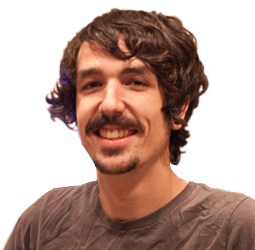-
Call Us Toll Free888-528-9703
-
Local/International (+1)919-682-5552
- Call Us! Toll Free! 888-528-9703
- Local / International (+1) 919-682-5552

$2,749.99
"Experience the Difference"
 Payments as low as $62/mo.
Payments as low as $62/mo.
Manufacturer's Description from Sequential
A Three-Generation Legacy
The Pro 3 SE is Sequential’s Special Edition of its new flagship 2-VCO + wavetable mono/paraphonic synth. It features a handsome, multi-angle tilt-up panel and full premium-grade walnut trim.
The Power of 3
The Pro 3 SE boasts the same powerful sound engine as the standard edition Pro 3: three oscillators, three vintage filters, three LFOs, four loopable envelopes, a massive 32-slot mod matrix, and a 16 x 16 x 4 sequencer. Throw in dual digital effects and four control voltage ins and outs, and you’ve got a hugely powerful instrument that’s as exciting to program as it is to play.
A Next-Generation Classic
The Pro 3 SE is a hybrid of solid, old-school analog synthesis paired with versatile digital technology. Its two voltage controlled oscillators provide warmth and presence while its third wavetable oscillator provides digital edge and grit. With 32 tables of 16 waves each and wave morphing, tonal possibilities are immense. Tuned feedback with grunge, and analog distortion deliver industrial-grade nastiness on demand.
Three Filters Based on Vintage Designs
At the heart of the Pro 3 SE’s ballsy sound are its vintage-style filters. Filter 1 is a 4-pole low-pass design based on the Prophet-6 filter. Filter 2 is a classic transistor ladder filter with optional resonance compensation to preserve its low-end punch. Filter 3 is a classic 2-pole, state-variable design based on the OB-6 filter that can be continuously varied between low-pass, notch, and high-pass operation, with an optional band-pass mode. An additional Drive control provides still more punch when you really want to get down and dirty.
Expressive Sequencing
Possibly the Pro 3 SE’s most powerful performance tool is its sequencer. With 16 tracks, 16 steps, and 4 phrases, it features both real-time and step input, ratcheting, variable gate and sequence lengths, multiple playback modes, and paraphonic operation. It also syncs to MIDI clock and external audio input, and inputs/outputs control voltages. In addition to notes, sequence tracks can control any parameter in the 171-destination modulation matrix.
Plays Well with Modulars
The Pro 3 SE’s flexible architecture opens the door to not only processing external audio, but also to interfacing with modular synths through its 4 rear-panel control voltage inputs/outputs and a dedicated gate output. Control voltages can be assigned and routed from within the modulation matrix and can run at audio rates for extreme modulation effects. Some of the many parameters that can be sent to the CV outputs include oscillators, LFOs, envelopes, and sequencer tracks, allowing the Pro 3 to become the central hub of a modular or multi-synth setup.
Effects, Envelopes, LFOs, an Arpeggiator, and Extreme Modulation
The Pro 3 SE’s Effects section provides delays, reverbs, time-domain effects such as chorus/phasing/flanging and more. There are four loopable five-stage envelope generators, three syncable LFOs with slew and phase offset, a full-featured arpeggiator, and a 32-slot modulation matrix with dozens of modulation sources and over a hundred destinations.
Monophonic and Paraphonic Operation
The Pro 3 SE was designed to be a super-powerful monosynth, but it is also a versatile 3-voice paraphonic synth. This makes playing 3-note chords not only possible, but with creative use of effects and some per-oscillator modulation, very expressive.
Put all of this sonic power in a three-octave, semi-weighted keyboard with velocity and channel aftertouch, add backlit pitch and mod wheels and a location-sensitive touch slider, and you’ve got one of the most inspiring synths ever made.

About Manufacturer
Sequential is helmed by legendary instrument designer and Grammy-winner Dave Smith, the original founder of Sequential Circuits in the mid-70s. Dave designed the Prophet-5, the world’s first fully-programmable polyphonic synth—and the first musical instrument with an embedded microprocessor.
Dave is generally known as the driving force behind the generation of the MIDI specification in 1981. It was Dave, in fact, who coined the acronym. In 1987 he was named a Fellow of the Audio Engineering Society (AES) for his continuing work in the area of music synthesis. After Sequential, Dave was President of DSD, Inc, an R&D division of Yamaha, where he worked on physical modeling synthesis and software synthesizer concepts. He then started the Korg R&D group in California, producing the Wavestation products and other technology.
He took over as President at Seer Systems and developed the first soft synth for Intel in 1994, followed by the first fully professional soft synth, Reality, released in 1997.
Realizing the limitations of software, Dave returned to hardware and started Dave Smith Instruments, which released the Evolver hybrid analog/digital synthesizer in 2002. Since then the Sequential product lineup has grown to include the Prophet X, Prophet Rev2, Prophet-6, OB-6, Pro 2, and Prophet 12 synthesizers, as well as the Tempest drum machine, co-designed with friend and fellow electronic instrument designer Roger Linn.
Dave is generally known as the driving force behind the generation of the MIDI specification in 1981. It was Dave, in fact, who coined the acronym. In 1987 he was named a Fellow of the Audio Engineering Society (AES) for his continuing work in the area of music synthesis. After Sequential, Dave was President of DSD, Inc, an R&D division of Yamaha, where he worked on physical modeling synthesis and software synthesizer concepts. He then started the Korg R&D group in California, producing the Wavestation products and other technology.
He took over as President at Seer Systems and developed the first soft synth for Intel in 1994, followed by the first fully professional soft synth, Reality, released in 1997.
Realizing the limitations of software, Dave returned to hardware and started Dave Smith Instruments which released the Evolver hybrid analog/digital synthesizer in 2002. Since then the DSI product lineup has grown to include the Prophet 12, Prophet ’08, Pro 2, Mopho, and Tetra synths, as well as the Tempest drum machine, co-designed with friend and fellow electronic instrument designer Roger Linn.
Specifications
3 OSCILLATORS
- Two analog, voltage-controlled oscillators
- One DSP-based digital oscillator
- Analog oscillators produce three classic wave shapes: (triangle, saw, pulse) with variable shape modulation/pulse width on each
- Digital oscillator produce 32 digital wavetables of 16 waves each with wave morphing, plus classic wave shapes (sine, triangle, saw, variable-width pulse) and super saw
- Digital oscillator 3 can function as an LFO for complex wavetable-based modulation
- White noise generator
- Hard sync, per-oscillator Glide, Oscillator Slop
3-VOICE PARAPHONIC PLAYABILITY
- 3-voice paraphonic mode with individually-gated envelopes per oscillator
3 FILTERS
- Three classic filter types
- Filter 1 is a 4-pole, 24 dB per-octave, Prophet-6™ low-pass filter
- Filter 2 is a classic, 4-pole, 24 dB per-octave, transistor ladder filter with optional resonance compensation
- Filter 3 is a 2-pole, 12 db per-octave, OB-6™ state-variable filter. It can be continuously varied between low-pass, notch, and high-pass operation, with an optional band-pass mode.
3 LFOS
- Three syncable LFOs with phase offset and slew per LFO
- Five waveshapes: triangle, saw, reverse saw, square, and S&H
4 ENVELOPES
- Four ADSR envelopes with delay (Filter, VCA, and two Auxiliary envelopes)
- Envelopes freely assignable to multiple modulation destinations
- All envelopes can repeat/loop
DIGITAL EFFECTS
- Dual digital effects
- Stereo delay, BBD delay, chorus, flanger, phaser, ring mod, vintage rotating speaker, distortion, high-pass filter, super plate reverb
FEEDBACK AND DISTORTION
- Tuned feedback with Grunge for extra-aggressive tonal destruction
- Programmable analog distortion
32-SLOT MODULATION MATRIX
- 32 slot modulation matrix with over 46 mod sources and over 171 mod destinations
- Modulation assignment buttons enable quick and easy modulation routing
- Mod Matrix runs at audio rates
4 CONTROL VOLTAGE INS & OUTS AND GATE OUT
- Four control voltage (CV) inputs and outputs for interfacing with modular synths and other CV-compatible devices
- Parameters that can be sent to CV outputs include oscillators, LFOs, envelopes, sequencer tracks and any other source within the modulation matrix. Runs at audio rates.
- Gate Out for triggering external CV-compatible devices. Any CV in can be used as a gate input.
16-TRACK SEQUENCER
- Advanced sequencer with three modes: normal, gated, and trigger
- 16 tracks and 4 linkable 16-step phrases
- Per-step ratcheting, duration, and velocity
- Multiple playback modes: forward, reverse, forward/reverse, random
- Supports real-time/step input, rests, and variable-length sequences
- Syncs to MIDI clock and external audio and CV input
- Sequences freely assignable to any modulation destination
ARPEGGIATOR
- Sophisticated arpeggiator with up, down, up+down, random, assign modes
- Syncs to MIDI clock and external audio and CV inputs
- Re-latching arpeggiation
- Runs concurrent with Sequencer for arpeggiated patterns with parameter automation
CONTROLS
- Over 60 knobs and 70 buttons enable deep, comprehensive editing with minimal menu diving
- Backlit pitch and mod wheels are easily visible in low-light situations and have a smooth, precise response.
- Independently adjustable upper and lower pitch wheel range
- Position-sensitive latchable touch slider for enhanced interactivity and control
- Full-sized, three-octave, semi-weighted keyboard with velocity and aftertouch
MEMORY
- 512 user and 512 factory programs
- Playlist mode for generating easily accessible set lists of your favorite programs
IN/OUT
- 1 MIDI In, 1 MIDI Out, and 1 MIDI Thru/Out 2 port
- USB port for bidirectional MIDI communication
- 4 CV inputs (4 x 1/8″ jack) with -10v to +10v voltage range
- 4 CV outputs (4 x 1/8″ jack) with -10v to +10v voltage range
- 1 Gate Out (1/8″ jack)
- 1 Sustain/footswitch input
- 1 Expression pedal input
- 1 External audio input (1/4″ phone jack)
- Main stereo output (2 x 1/4″ phone jack)
- Headphone out (stereo 1/4″ phone jack)















